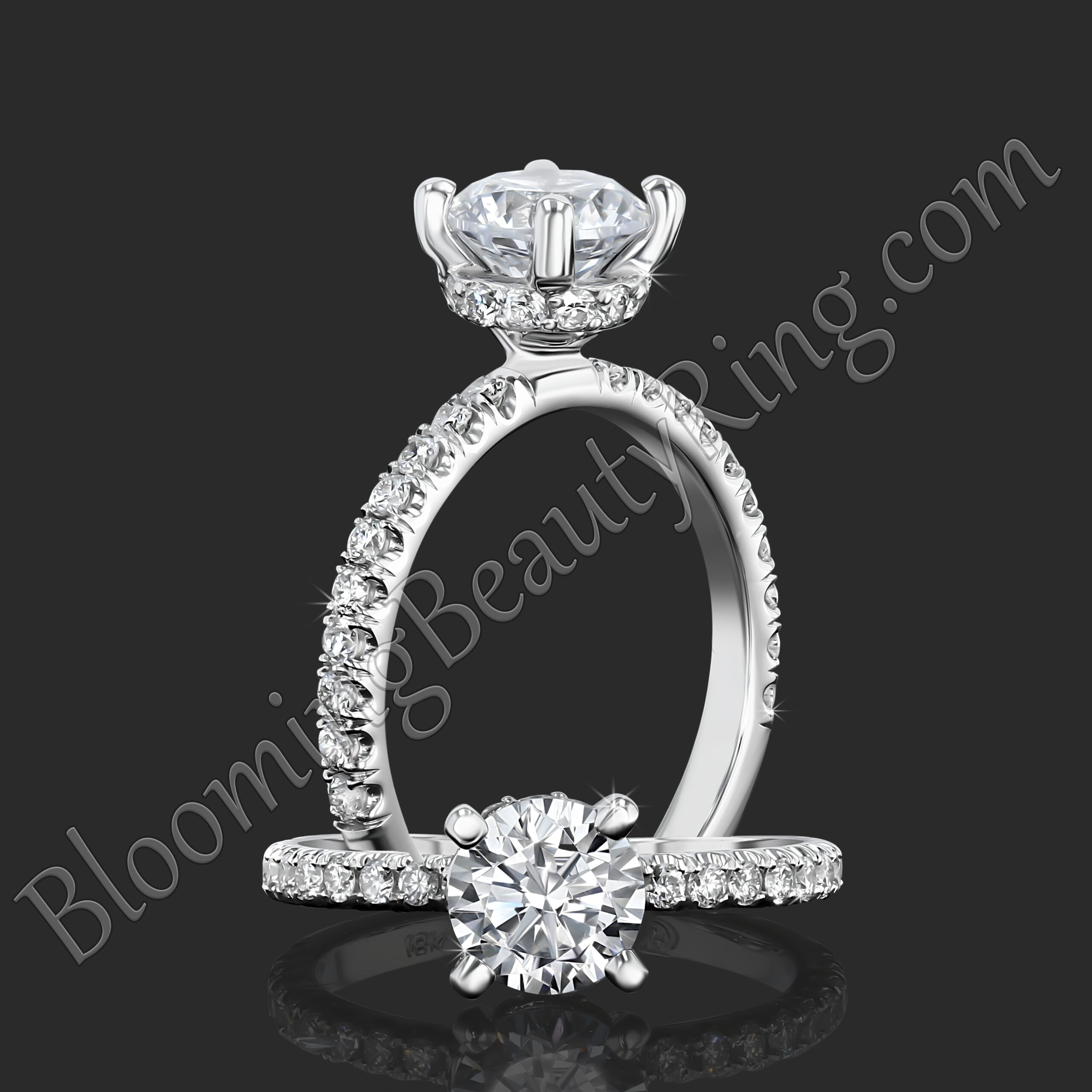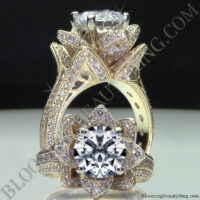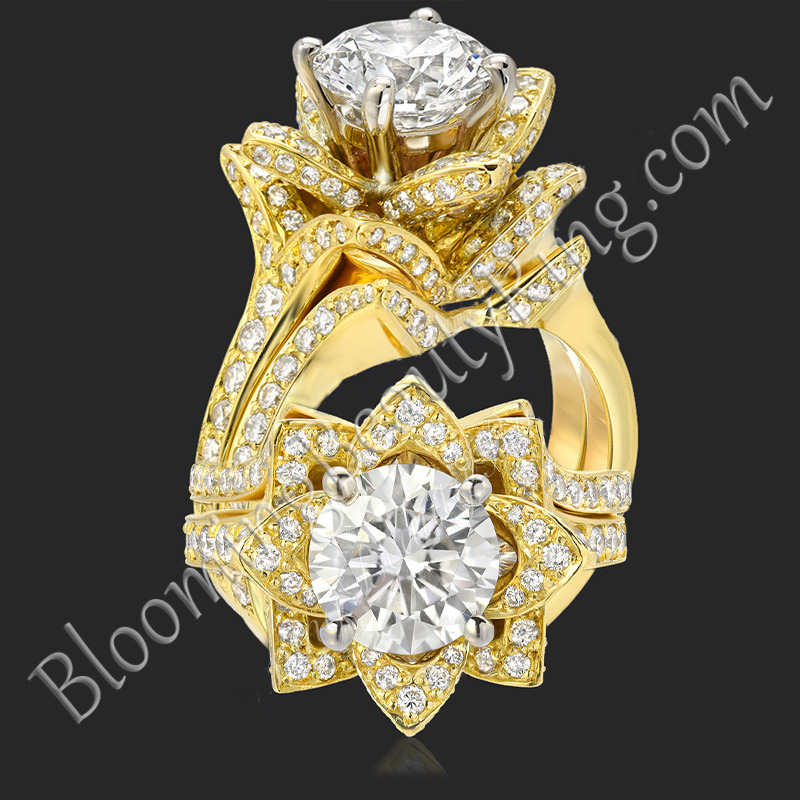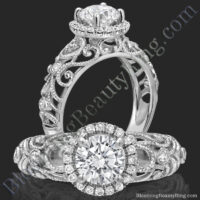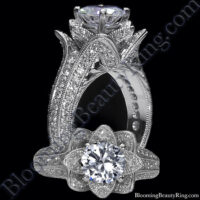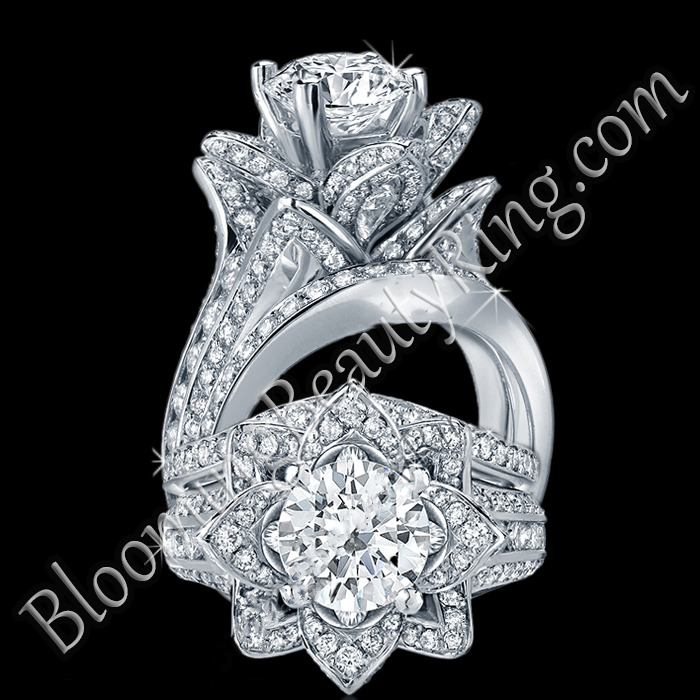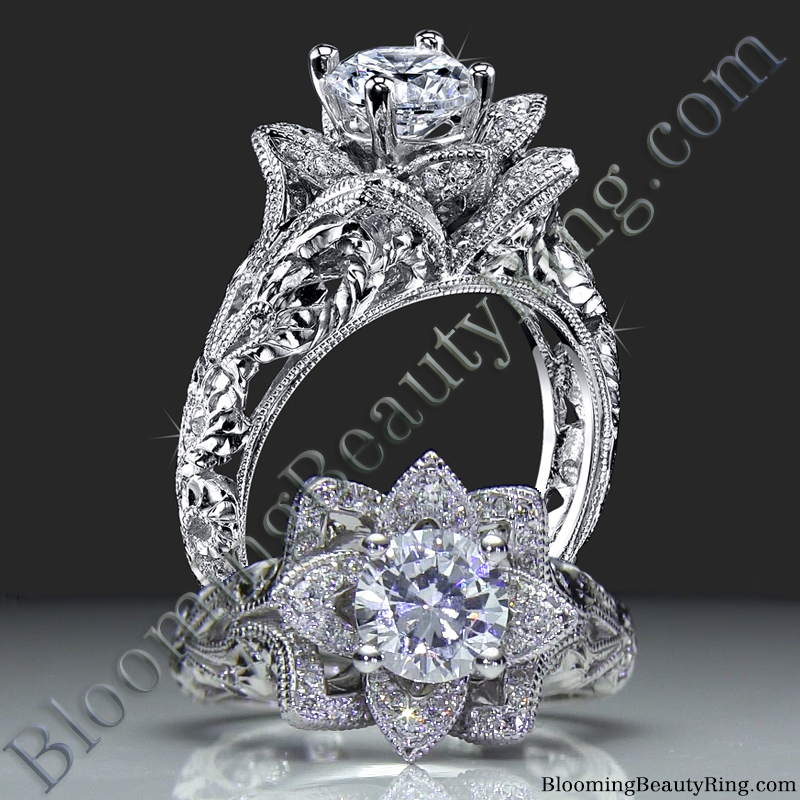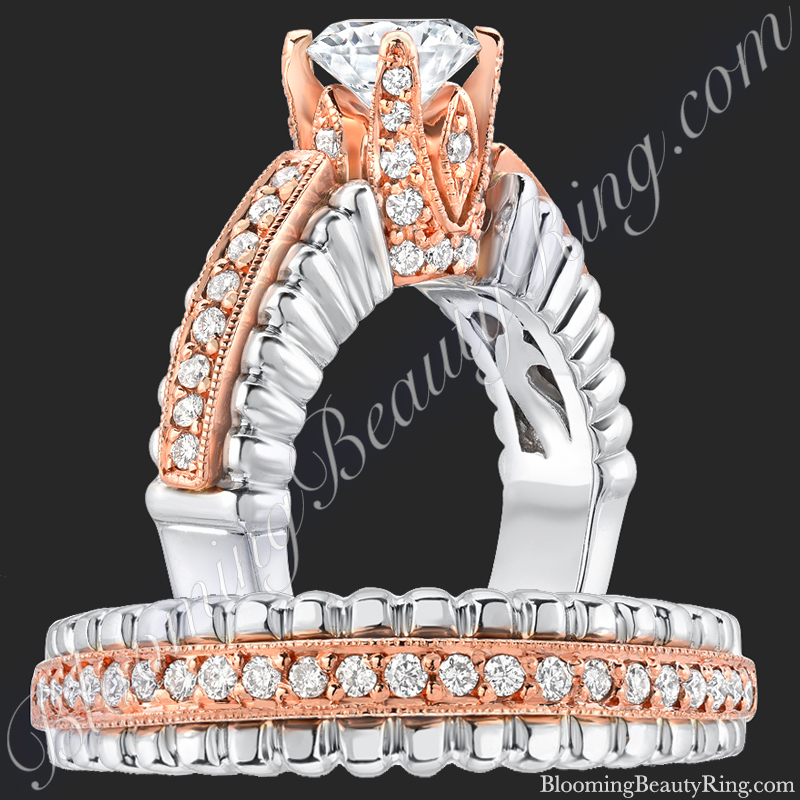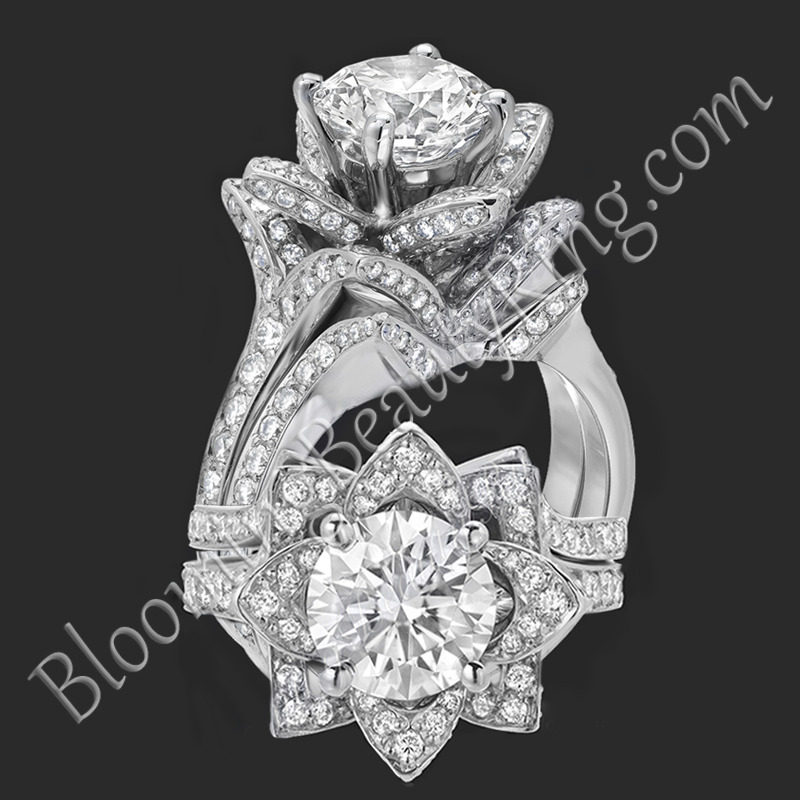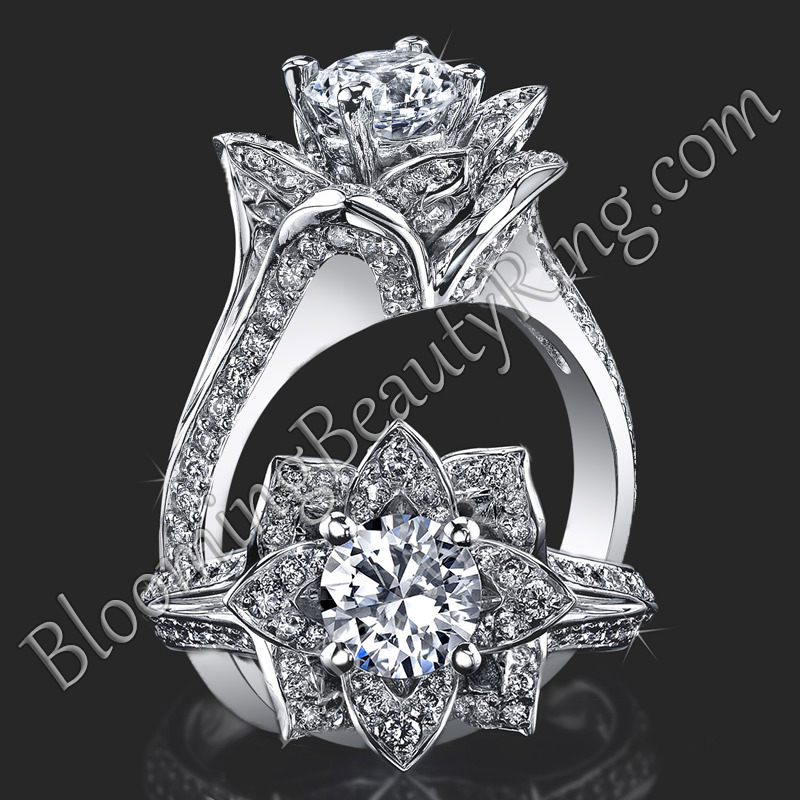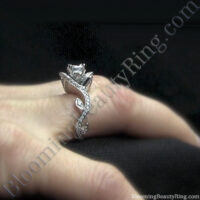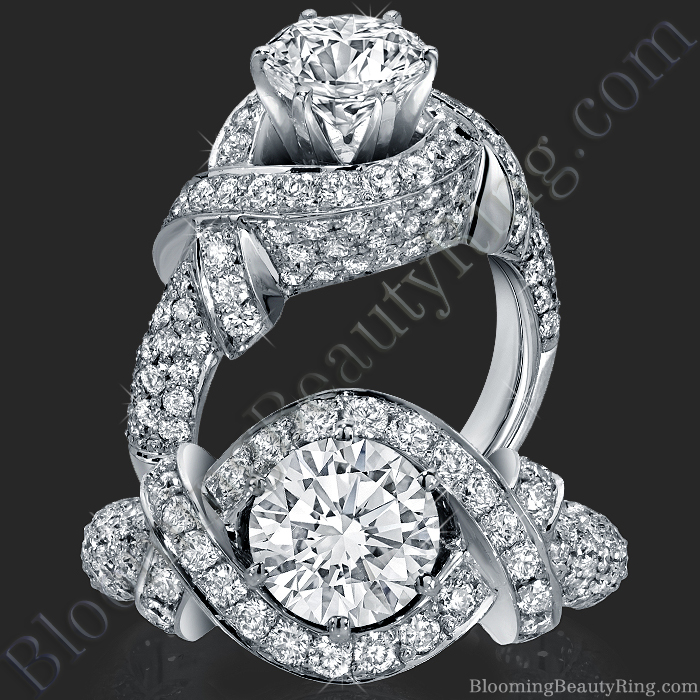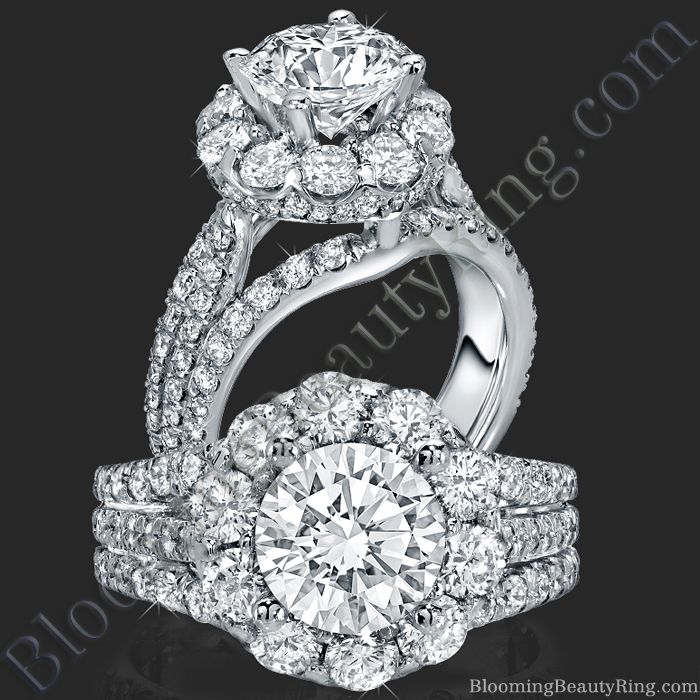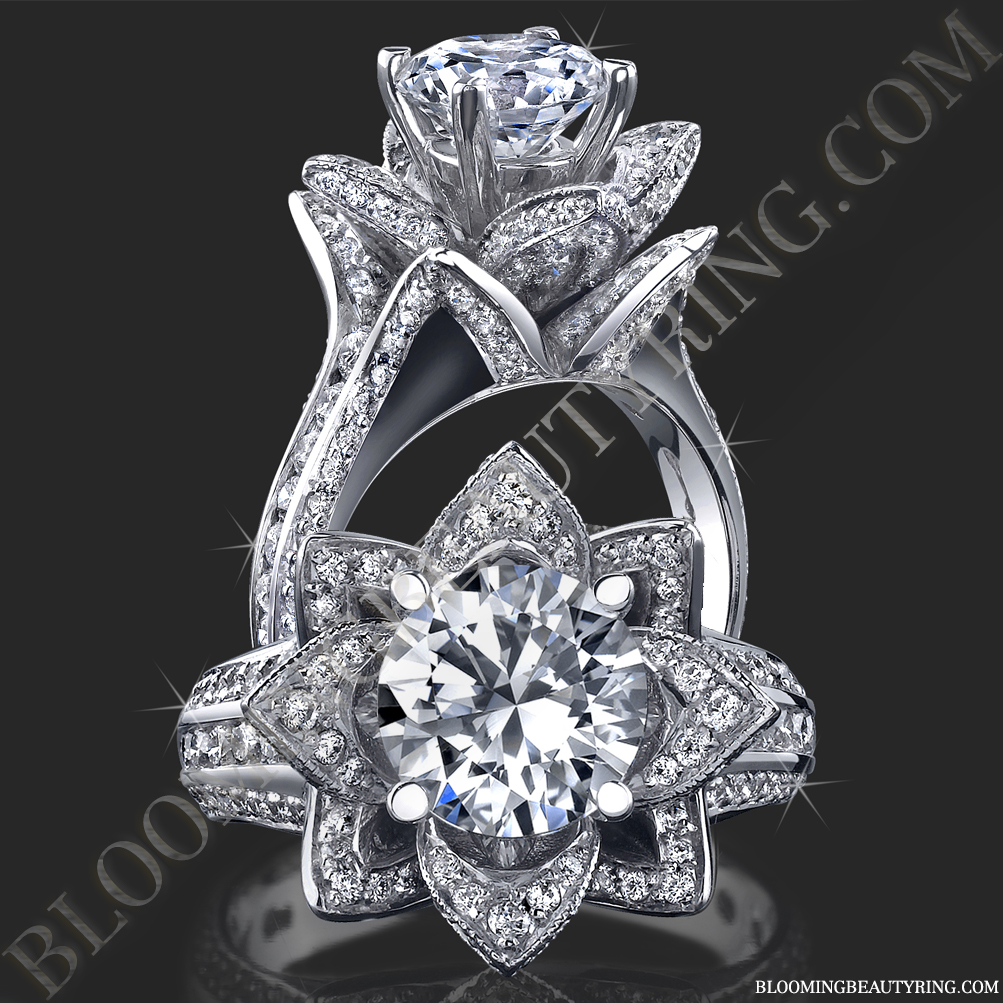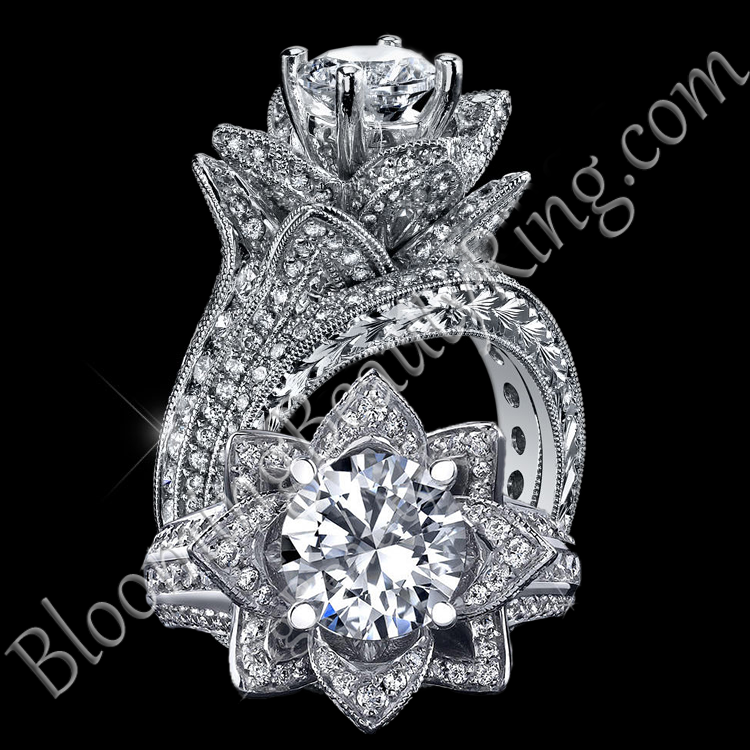~ Diamond Terminology from A to Z ~
There are thousands of terms being used in today's jewelry industry. Some common knowledge, others are obscure and baffling. We've created a database of terminology from A to Z to make it easy, and of course if you still have questions, please do not hesitate to send us an email or give us a call.
Cachette
A sealed Package that contains diamonds, and payment terms.
Cairo Star
A variation of the modern day Brilliant Cut with 74 facets.
Canada
The first diamond mine was opened in Canada in 1991 and according to some sources, produces over 12 million carats of rough diamonds, valued at over 2 Billion Dollars.
Canary
A name for "Fancy" vivid yellow diamonds.
Carat Weight (Carats)
A unit of measurement used to weigh diamonds, derived from the ancient word "Carob". One carat equals 100 points.
- 1 carat is equal to 200 miligrams (1/5th of a gram)
- 5 carats equal 1 gram.
- One Carat is equal to .007 ounces.
- 141.7 carats equal 1 ounce.
Two important notes are :
1) An increase in carat weight will mean an increase in depth as well as diameter-that is why a 1 carat diamond (approximately 6.5mm diameter) will not appear twice as wide as a 1/2 carat diamond (approximately 5.0mm diameter).
2) The larger a diamond is, the more rare it is. This means that the price per carat increases exponentially when comparing diamonds of the same quality. For example: A 2 carat diamond may cost 4 times as much as a 1 carat diamond instead of just twice as much. Or a 3 carat diamond may cost 9 times as much as a 1 carat diamond instead of just 3 times as much, and so-on.
Carbon
A non-metallic element that forms diamonds, graphite, and coal. Diamonds are composed of entirely or almost entirely of carbon.
Carbonado
Partially crystallized or imperfect form of diamond.
Cartel
A combination of producers of any product joined together to control its production, sale, and price, so as to obtain a monopoly and restrict competition in any particular industry or commodity. Ex. Some believe that De Beers Group has operated a succesful diamond cartel for most of it's existence.
Cartier
A well known, high-end jeweler.
Cavity
An inclusion consisting of a large or deep opening in a diamond either internal or extending to the surface. Internal cavities may contain gas, liquid or solid, any may include a combination.
Cecil Rhodes
Staked a claim in the Kimberly diamond fields in 1871. Formed De Beers Mining Company in 1880, and later in 1888 secured a monopoly of the Kimberly diamond production by creating The De Beers Consolidated Mines with Barney Barnato. Also secured mining concessions in Matabeleland and Mashonaland which he exploited through the British South Africa Company.
Centenary
A Very large and famous diamond discovered in 1986 at the Premier Diamond Mine owned by De Beers Consolidated Mines. It is one of the largest "Colorless" D grade diamonds ever found, originally weighing 599 carats in the rough. It is internally and externally flawless.
It was presented on May 11th 1988, at the De Beers Centennial celebration, hence the name Centenary.
The Rough Centenary diamond was cut by a 6th generation diamond cutter by the name of Gabi Tolkowsky. There was a specially designed underground room in the De Beers Diamond Research Laboratory in Johannesburg South Africa.
The final cut and polished diamond weighs in at 273.85 carats and has 247 facets. (83 of which are on the girdle) It was completed in February of 1991. It is believed that De Beers sold the Centenary to an unknown buyer. The Centenary has never been appraised publicly, however in 1991 at it's public unveiling, it is known to have been insured for over $100 million dollars.
Center Stone
Typically the most dominant stone in a ring or piece of jewelry, consisting of 3 diamonds or more.
Certified (Certificate)
Certified means that a Gemological Laboratory has certified a diamonds quality characteristics, such as clarity, color, carat weight, cut and proportions. It will then issue a certificate which is typically a laminated document describing these characteristics in detail. Although it is considered by many to be an important process, certification can increase the price of a diamond.
CGL
Central Gem Laboratory established in 1970 in Tokyo, Japan for diamond grading and identification.
Channel Setting
A type of setting that will show no metal between the diamonds. Potentially a very precarious method of setting diamonds if not performed in a quality manner.
China
An emerging market for extraction, cutting, and consumer demand of diamonds.
Chip
A tiny piece of diamond that is missing. This may be caused by normal wear and tear, or by the cutting process.
Clarity
Refers to a quality characteristic of a diamond on a grading scale of Flawless to Imperfect. These "Clarity" characteristics are referred to as "Inclusions" (which are internal) and "Blemishes". (which are external) The "Clarity Grade" is determined by the size, number, position, nature, and color of these characteristics.
An extremely small percentage of diamonds will be classified as "Flawless", which means they exhibit no inclusions or blemishes of any kind, when examined closely by a skilled grader under 10x magnification.
Clarity Enhanced
A diamond that has undergone a process of filling naturally occurring "Feathers" with a glass-like substance. The clarity enhancement process is becoming more acceptable and widespread due to the large savings that can be enjoyed over similar quality "non-enhanced" diamonds.
Clean
A word used to describe or infer a high quality or high clarity grade of diamond.
"Clean to the Naked Eye"
The diamond shows no flaws what-so-ever when viewing with just your eyes. The inclusions or flaws can be seen, however, under 10x magnification. Clean to the naked eye usually refers to diamonds with a clarity rating of IF to SI1 WHEN graded by GIA or EGL-USA standards. A FL diamond will have no flaws when viewed under 10x magnification or to the naked eye.
Cleaning
Several methods may be used to clean jewelry. Warm-soapy water works well. Also Steam cleaners may be used, such as "The Jewel Jet" Some people even use Vodka. Ultra-sonic cleaners may be used with caution on some jewelry. Always consult the jewelry manufacturer or the seller of your jewelry first for proper cleaning instructions.
Cleavage
Diamond Cleavage is described as, the plane in which a diamond crystal can be split into smaller pieces with relative ease by a skilled person. The 4 planes that parallel the faces of an octahedron diamond, are generally referred to as the "Cleavage Planes".
Cleaving
The act or process of splitting diamonds into smaller pieces, typically with the grain.
Closed Culet
A culet that consists of a point rather than a facet.
Cloud
Described as a "Cloudy" or "Milky" appearance in a diamond, that is a result of a group or cluster, of very tiny white inclusions internal to the diamond.
Cloudy
A common clarity characteristic visible in some "I" grade diamonds. This appearance is a result of a "cloud" type inclusion.
Cluster (Cluster Ring)
A type of ring or jewelry that usually includes a group of very small diamonds. Generally less expensive than a diamond solitaire ring due to the very small size of the diamonds. Carat weight of cluster rings is usually described as "Total Carat Weight" rather than just "Carat Weight". Total carat weight is the total weight of all the small diamonds added together.
Cognac
A specialized marketing term used to describe the color of a Brown Diamond.
Color
In most cases it refers to the color of a "White" diamond or the absence of color in a "White" diamond as graded on a scale from D to Z. The "D" Grade Is colorless, and Z has a fairly predominant tint of yellow color to it. (And possibly brown) Colorless (D) diamonds are rare and the most desirable. The better the color grade of a diamond, the more expensive it will be. (If all other factors are equal)
Colored Stone
All natural Gemstones except diamonds, and Fancy colored diamonds.
Color Origin
The origin of the color in a diamond can be traced to two factors. #1) Man Made #2) Mother Nature Made. Two common methods used to enhance the color of diamonds are "Irradiation" and The "High Pressure High Temperature"" Method, Referred to as "HPHT". Some Fancy colored diamonds are extremely rare and therefor very expensive, when created naturally by Mother Nature.
Consolidated
De Beers Consolidated Mines. Formed in 1888 when Cecil Rhodes merged with Barney Barnato.
Crater Of Diamonds State Park
A State Park located in Arkansas that is believed to be the 8th largest diamond bearing deposit in the world. This State Park is the only diamond deposit in the world that is open to the public for diamond exploration. Good Hunting!
Created
Usually refers to Man-Made (or Synthetic) diamonds. Also referred to as Lab Created.
Crown
The upper portion of a cut diamond above the girdle that contains the upper facets. The crown also contains the large, flat area on the very top of the diamond called the Table. All Faceted gemstones have a "Crown".
Crown Angle
The angle of the crown between the girdle and the table.
Crown Height
Refers to the measurement of the depth or (height) of the diamond above the girdle.
Crystal
A diamond is actually a single crystal of Carbon.
Cube
A cube is a rough diamond that is shaped like a cube.
Cubic Zirconia
A diamond simulate. (Fake Diamond) Also known as CZ. A very low cost alternative to purchasing a real diamond. Most suitable for costume jewelry or earrings. Cubic Zirconia is generally not used for long term items such as an engagement ring.
Culet
The small facet polished across, what would otherwise be the sharp point or tip of the pavilion of a faceted stone, especially in a round brilliant cut stone. It is created with the intention of avoiding breakage of this tip.
Cullinan
The largest rough diamond ever found (3,106 carats) Later cut in to 3 smaller size diamonds. The Cullinan 1 is 530 carats and is currently part of the British Crown Jewels
Cultured (Cultured Pearl)
A synthetic diamond or pearl. A cultured pearl is created by implanting a shell bead or mantle tissue in to the body of a pearl bearing musk.
Cut
Known as One Of the 4 C's. The cut of a diamond is very important in determining the amount of fire, sparkle and brilliance a diamond will exude. Although no single one, of the 4 C's should be considered "The most important C", the cut of a diamond is considered to be extremely important. Cut refers to the proportions and finish (also called Make) of a cut and polished diamond. Proportions are the size and angle relationships between the facets and different parts of the diamond. Finish includes polish and details of facet shape and placement. Cut also refers to the shape of a diamond, such as Emerald Cut, or Round Brilliant Cut, etc.


